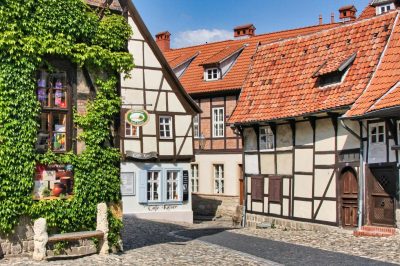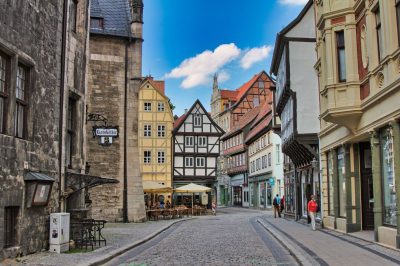The Altmark is somewhat hidden even for Germany, being quiet far away from the major highways. If you want to visit it, you have to leave the beaten track. But the detour to the north of the German state of Saxony-Anhalt is well worth it. Here, some of Germany’s most beautiful cities await visitors. Tourists, especially foreigners, are still rare except maybe for Tangermünde and the explorations you can make here by bike, on foot or by car are unique. Come with us to the most beautiful places in the Altmark in Germany.

Jerichow Monastery – Most Beautiful Monastery of Northern Germany
The Jerichow Monastery was already a real highlight of the tour for me as the very first stop. The almost completely preserved medieval monastery complex is not only an architectural highlight.
However, the monastery has nothing to do with the city of Jericho on the Dead Sea. Jerichow Monastery was built at the end of the 12th century and shows elements of Romanesque architecture as well as the brick Gothic typical for the region.
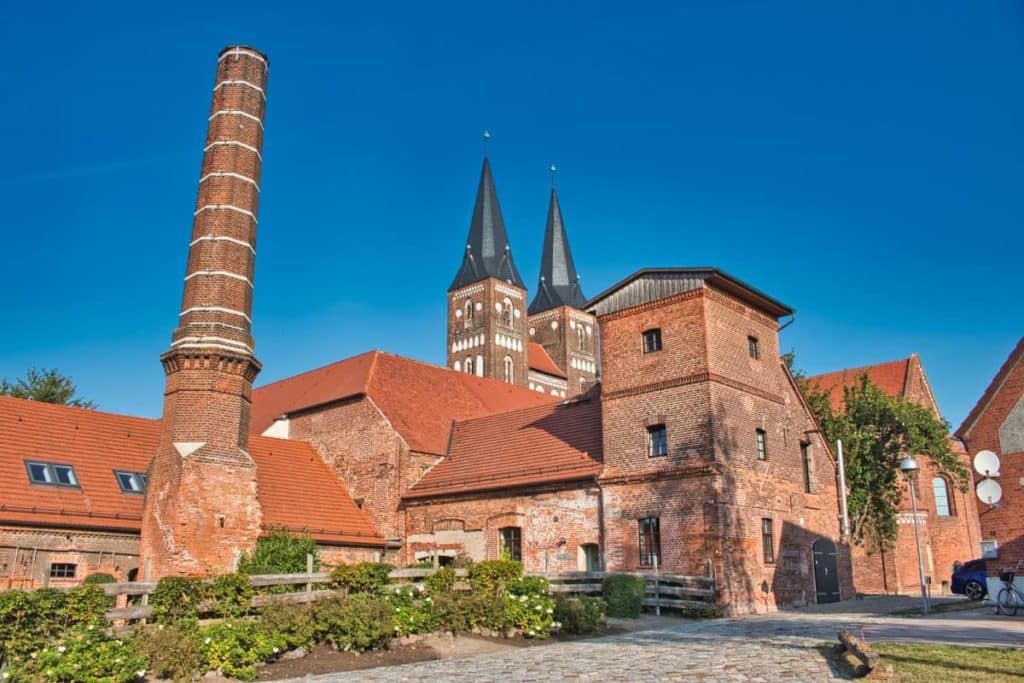
The monastery is one of the most beautiful stops on the Straße der Romanik (Romanesque Road) – a scenic route put together to highlight some of the oldest sights in Germany. Like many of the churches in the region, it became a Prussian state domain during the Reformation. Badly damaged in World War II by fighting between the U.S. Army and the German Wehrmacht, it was mainly used for agricultural purposes after the war. It was not until 2004 that the Jerichow Monastery Foundation was established by the state of Sachsen-Anhalt, which today takes care of the preservation of the site.

Tangermünde – A unique old town
Tangermünde is considered one of the most beautiful cities in Saxony-Anhalt and has the most visitors of the places to visit in the Altmark. Anyone who visits the small town at the estuary of the small river Tanger into the Elbe, understands why. Here, time has stood still since the Middle Ages. Beautiful half-timbered buildings are everywhere. The town is surrounded by an impressive city wall and you enter the center past one of the beautiful city gates.


















In Schulzens’ Private Brewery, locally brewed beers are waiting to be tasted. By the way, we are not the only ones who think that the town is one of the most beautiful small towns in Germany. In a poll by the German website Travelbook, tourists from all over Germany voted Tangermünde the most beautiful small town in Germany.

Dike breach near Fischbeck in the Elbe flood 2013
From the other side of the Elbe you have a fantastic view of the skyline of Tangermünde, especially in the morning. Here in the middle of nowhere near Fischbeck, there is also a monument commemorating the dike breach during the 2013 flood. This was emergency plugged by sinking three barges with explosives. Even the German armed forces helped with the rescue operation.

Bismarck Museum in Schönhausen – Nursery of the German chancellor
Probably the most famous person from the Altmark is the Chancellor of the Reich, Otto von Bismarck. The famous leader of German destiny was born in Schönhausen (Elbe) in 1815 and helped unite the country in 1871. Here you can visit his birthplace, which together with the adjacent buildings has been converted into a memorial. He came from a family of landed gentry who owned estates here. Schönhausen had been the family’s ancestral seat since 1563. Generations of his ancestors lived and died here. This tradition is said to have made a deep impression on Bismarck. In the exhibition you can learn more about the origins of the important statesman.

Havelberg – Between Brandenburg and Saxony-Anhalt
For me, Havelberg in particular was a real surprise on my road trip through the Altmark. This was also due to the fact that even as a Saxony-Anhalt resident, I knew little about the old Hanseatic city. But already when entering from the south over the Havel bridge, there is a breathtaking view of the old town, the cathedral and the surrounding houses.
I have the car then first parked at the beautiful city church of St. Laurentius to walk back over the Havel and enjoy the view. Hidden next to the bridge there was a small clearing with a magnificent view of the old town island.


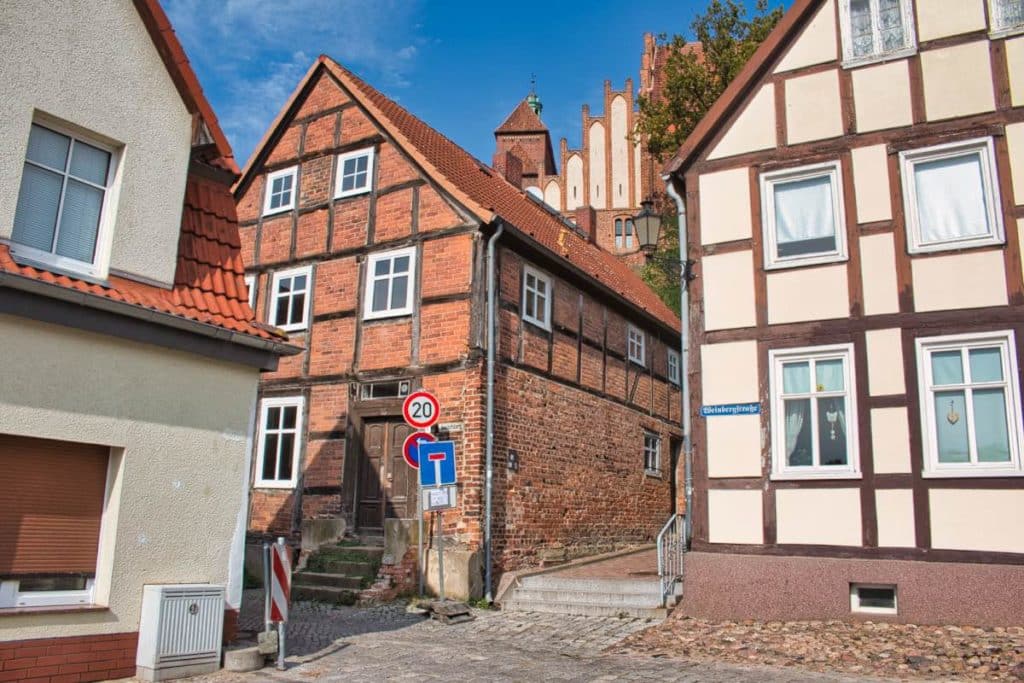




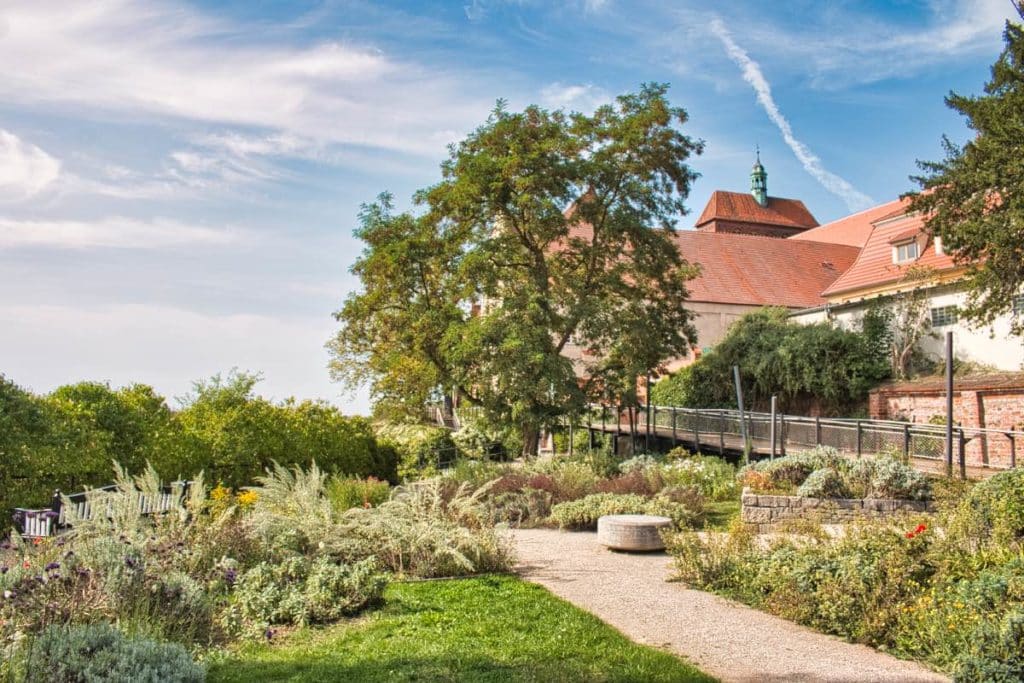
Old Town Island
Today, the historic buildings of the old town squeeze together on this small island. Not only the town church St. Laurentius is located here, but also the town hall and many small alleys allow for an extensive walk. The Beguinhaus on the Salzmarkt is one of the oldest houses in the city and a great photo motif. Since 1750, the Havelberg Horse Market has also attracted visitors to the city. Up to 1,000 horses are sold here every year. Up to 200,000 visitors come to the popular festival.
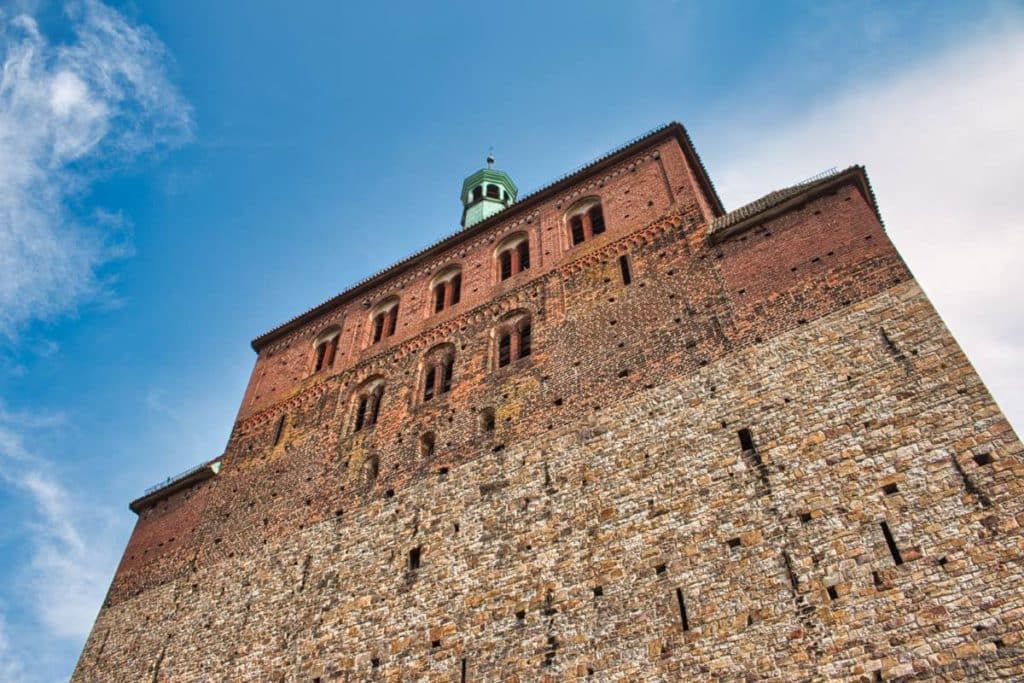
Havelberg Cathedral
From there I walked to the cathedral, which celebrated its 850th anniversary in 2020. It is part of the Romanesque Road and, with its massive tower, hard to miss. Even though the cathedral shows many Gothic features, it also has substantial Romanesque building elements such as the east wing. The cathedral was diocesan town for several centuries and lost this significance only after the Reformation. However, the cathedral is also a sign of the subjugation of the Slavs, who were in the majority here until the 12th century and defeated in the so-called Wendish Crusade.
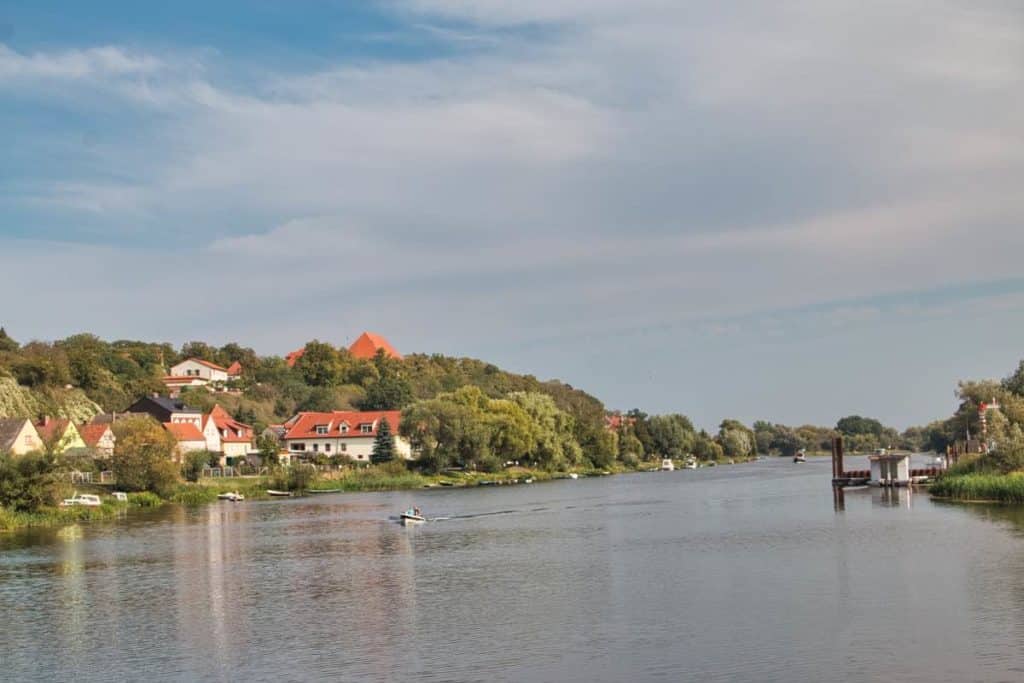
Havelberg in Brandenburg?
On the way back to the city you can watch numerous boats in the summer. You can also rent a raft on the Havel for a raft trip in Brandenburg. Speaking of Brandenburg – after German reunification, many residents of Havelberg preferred to belong to the State of Brandenburg rather than Saxony-Anhalt. Because until the structural reform in the GDR in 1952 when the districts were introduced, Havelberg was part of the Westprignitz. A vote was held in the town council and a majority voted for Saxony-Anhalt. However, many residents are still disappointed about the decision to belong to Saxony-Anhalt and therefore deliberately let the Brandenburg state flag fly in their gardens.

Elbfähre Räbel – Once by boat
From Havelberg it is easy to cross the Elbe by ferry instead of a bridge. In the district of Räbel in Werben, you can take a ferry across the river. This is indeed a nice experience, even if the trip with the combined yaw rope and motor ferry takes only a few minutes. On the drive to Werben, you can literally see on the idyllic country road how leisurely life still goes on here. Several village churches also invite you to visit them. But before you go to the ferry, ask some of the friendly passers-by whether the ferries are running at all, because sometimes they pause and you have made a huge detour.

Hanseatic Town of Werben – Alive again
Formerly the smallest town in Saxony-Anhalt (now only the third smallest), it was once on the verge of extinction. But that has changed dramatically. The many half-timbered houses ensure that the small Hanseatic town has become interesting for visitors again and entrepreneurs are even settling here. The popular Elbe Cycle Route certainly contributes to this. Werben itself entices visitors to slow down with its small alleys and cozy atmosphere. Like many of the towns in the Altmark, Werben belonged to the Hanseatic League.

Magnificent buildings in the small town
To this day, some of the magnificent buildings on the market and the church of St. Johannis bear witness to the former prosperity of the town, which is even over 1000 years old. In St. Johannis stands a magnificent altar, the upper part of which is evidence of the Reformation, while the lower part is still a classic Marian altar. 27 angels in a cloud wreath show the instruments of the time. The sleeping Joseph, however, is quite bored of the birth of Jesus.
But in Werben, too, a former gate is the town’s landmark – the Elbe Gate. In corona-free summers, the Biedermeier Summer is also celebrated here – as a tribute to this era, which celebrates the province like no other – no problem in Werben. And the people of Werben also have a heart for storks. They are proud of the more than 20 breeding pairs that live on nest that are places on roofs across the town.



Osterburg – Eating asparagus in the river bath
Osterburg, like the other towns in the region, was a member of the Hanseatic League too. Nevertheless, the city has been shaped mainly by the surrounding agriculture. Many half-timbered houses of which especially the gabled houses were formative, you can see here until today. Of course, the most characteristic buildings here, such as the church of St. Nikolai, are also built of brick. In the Kreismuseum (County Museum) you can learn more about the rural history of the town. Osterburg is actually even the cradle of German asparagus cultivation.

Biesebad
River baths are becoming increasingly rare in Germany and Europe. And with the Biesebad, the town of Osterburg in the Altmark region has preserved one of these rare baths. The people of Osterburg are also proud of this. And we think, for the entrance fee of 2 Euro you can contribute to the preservation of this cultural bath. The bath is usually quite empty most times, especially during the week. The water of the Biese is refreshing. However, if you prefer to stay dry, you can rent a canoe.

Stendal – Suddenly so big
Stendal is the heart and the largest city of the Altmark. And after a road trip to the Altmark sights and the rural idyll, it is very unusual to find here a city with over 40,000 inhabitants. Stendal was once an important Hanseatic city, as evidenced by the huge Roland statue next to the town hall.


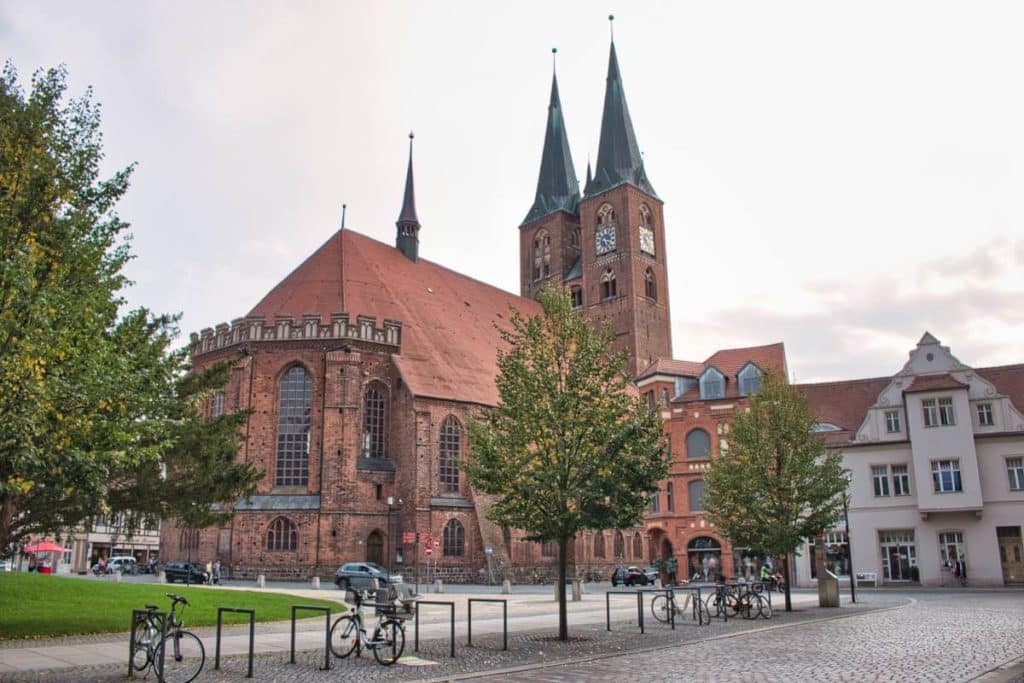






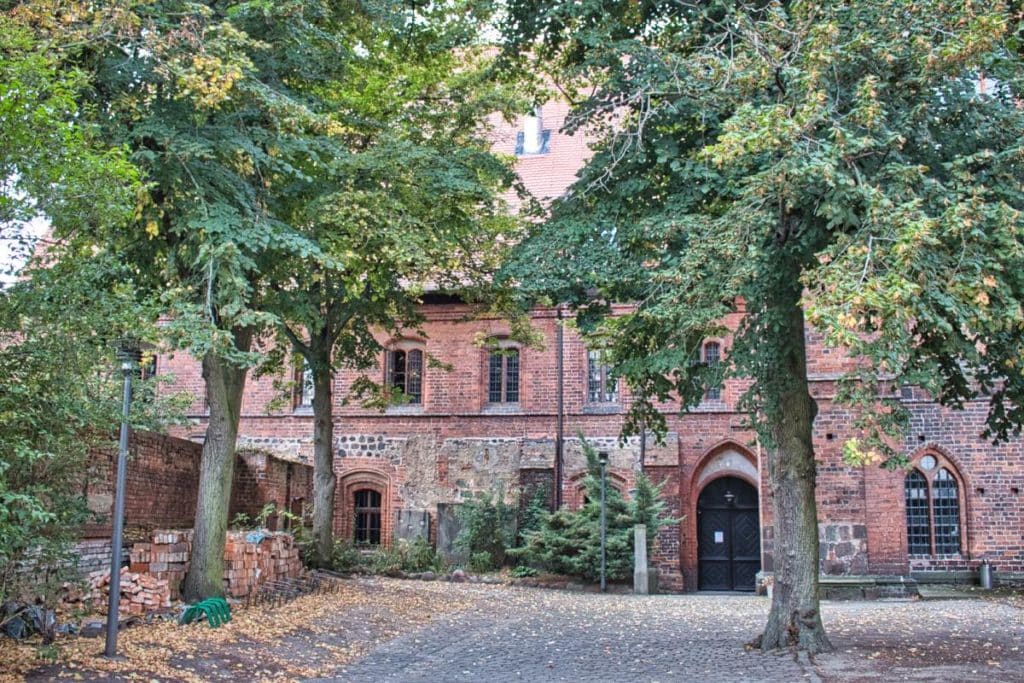








The other impressive buildings from the North German brick Gothic period also date from the time of the Hanseatic League. The old city gates – the Uenglingen Gate and the Tangermünde Gate – are considered landmarks of the city. But also the many churches of the city are unique architectural monuments that could hardly be more beautiful. In addition to the St. Nicholas Cathedral, it is also worth visiting St. Mary’s Church, the town church next to the town hall.

An interesting contrast, on the other hand, is the Ramelow department store, which was built in 1930 in the modernist style. Since the reunification, the original owner family is again in possession of the house. To this day, a textile department store can be found here.
East Germany Book Tips
Unfortunately there is nothing published in English about the Altmark yet. It’s understandable as it’s really a hidden gem. But there are some books that can help you better connect to East Germany.
The East German Handbook explains everything you need to know about East Germany.
No products found.
The Lonely Planet for Germany also covers the East and is a good source for general travel ideas.
No products found.
This book by Anna Funder dives also somewhat deeper into the former GDR.
No products found.


